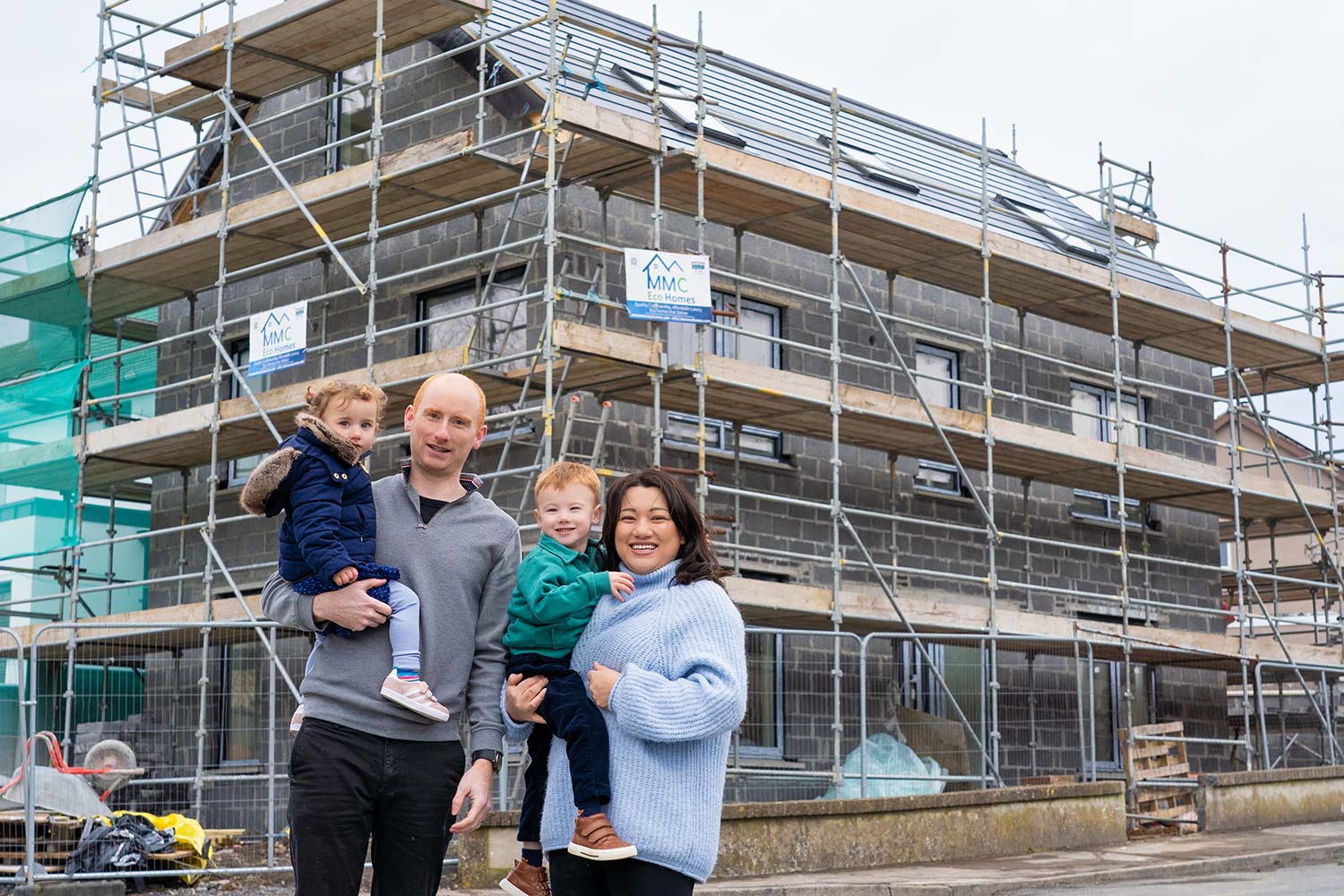By 2030 all newly built homes in the EU will be built to be Zero Emission (ZE) buildings, not just near Zero Energy Buildings (nZEB) as they are now.
This means that newly built homes will continue to have to consume little energy and be powered by renewables insofar as possible, as per the nZEB definition.
But from 2030, they will also have to emit no on-site carbon emissions from fossil fuels and calculate their global warming potential based on their lifecycle emissions.
Furthermore, homes built from 2030 onwards will have to be equipped with measuring and control devices for the monitoring and regulation of indoor air quality.
New energy ratings
Building Energy Ratings (BER), or broadly speaking energy performance certificates, will also be harmonised in the EU. The 15 per cent worst performing buildings will automatically get a G rating from 2025. To qualify as an A rated building, the home will have to be ZE.
You will also notice a new statistic on your BER from 2030: the Global Warming Potential (GWP) of your new home. This means a cradle to grave assessment of the emissions you will be responsible for.
It looks like there will be no minimum requirements to achieve. But displaying GWP is, according to the draft EU document, “a first step towards increased consideration of the whole lifecycle performance of buildings and a circular economy”.
The BER’s Advisory Report, meanwhile, will morph into a Renovation Passport which will look the same in all EU countries.
The Renovation Passport will include “a sequence of renovation steps building upon each other, with the objective to transform the building into a zero-emission building by 2050 at the latest” and will “contain information about potential financial and technical support”.
Why the changes?
Most buildings in the EU (three in four) are not energy efficient and are still essentially powered by fossil fuels. In fact heating, hot water and cooling account for 80 per cent of the energy we consume in our homes.
The plan is to upgrade the worst performing homes (the worst 15 per cent) from an energy rating of G to F by 2030, to at least E by 2033.
ROI has a good track record for energy upgrades; it invests in social housing and offers free energy upgrades to homeowners who receive certain welfare payments.
For all others with a G rated property, the main driver is likely to be the need to meet minimum energy performance standards “at a trigger point on the market (sale or rent), in a period of time or by a specific date”.
How are the changes happening?
The European Commission plans to align the rules for the energy performance of buildings with the European Green Deal, to decarbonise the EU’s building stock by 2050.
The main objectives of this revision are reducing buildings’ greenhouse gas emissions and final energy consumption by 2030, and setting a long term vision for buildings towards EU wide climate neutrality in 2050.
To implement the change, the EU published its draft recast of the Energy Performance of Buildings Directive (EPBD) in December 2021. Even though the update has yet to be fully approved, the draft document is a very good indicator of what’s to come.
OPINION
Stay ahead of the curve
Building a home to Zero Emission standards is completely different to building it to nZEB. The good news is, it can easily be done.
The EU’s draft recast EPBD states that only ZE buildings can be A rated on the BER scale from 2030. In ROI, that could mean that over 100,000 current A1, A2 and A3 rated homes will become B rated or worse.
What’s more, anyone building currently to nZEB is facing having to retrofit their home in the decades ahead. And it won’t necessarily be cheap as GWP is a metric being added to the BER under the new ZE standards from 2030.
So even though it’s early days yet, it’s a good idea to look into what it means to build to ZE with your architectural designer to avoid future retrofitting costs.
My reading of the draft is that it will be practically impossible to meet ZE with a heat pump because the electricity grid is still mostly reliant on fossil fuels. It looks like only smart radiators and solar thermal technology will meet ZE until the grid cleans itself up – supposedly by 2030. Until then, generating electricity on site sounds like a safer bet.
A final thought. Because ZE homes will not need boilers, fireplaces, or stoves, will existing buildings that still have these devices become more sought after? And is the house of the future destined to be sterilised and boring?
John Quinn of Hone, honeworld.com





















